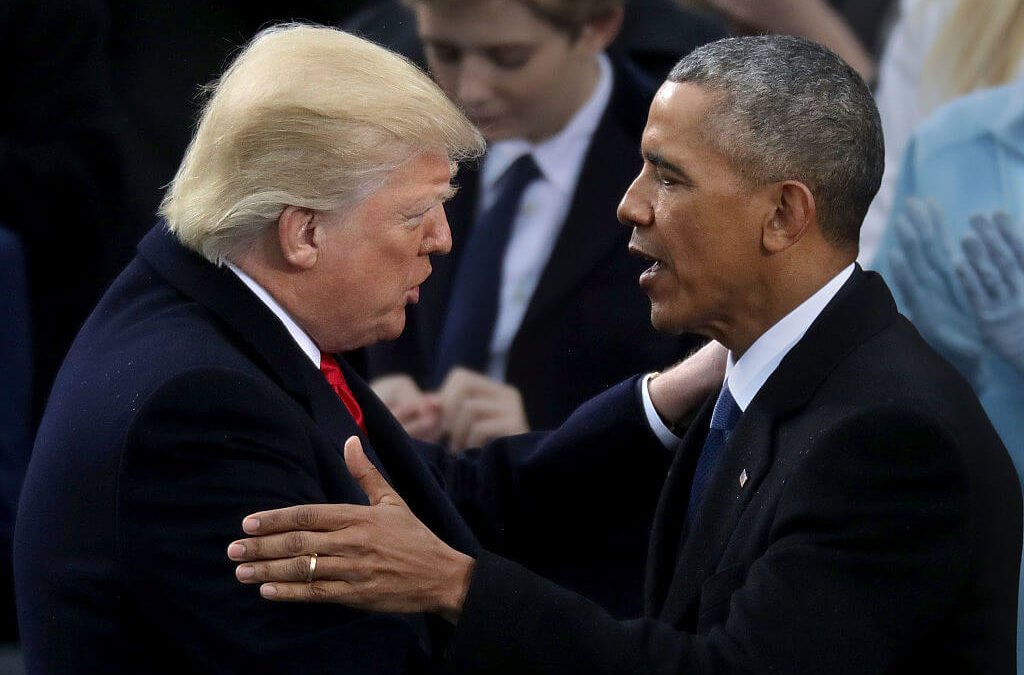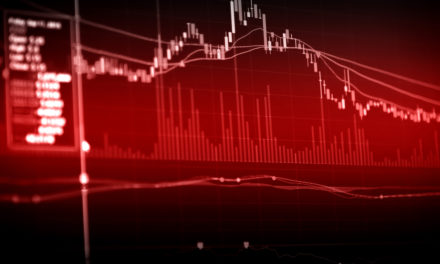Donald Trump often brags about the strength of the U.S. economy under his watch as president.
“We’re having the best economy we’ve ever had in the history of our country,” he said during a recent speech.
But recently former President Barack Obama went so far as to say he also deserves some credit for the economy, telling a crowd at a recent rally for Nevada Democrats.
“When I walked into office 10 years ago, we were in the middle of the worst economic crisis of our lifetimes,” Obama said. “By the time I left office, wages were rising, uninsurance rate was falling, poverty was falling, and that’s what I handed off to the next guy.
“So when you hear all this talk about economic miracles right now, remember who started it.”
The Hill contributor Daniel Griswold in a recent article compared some of the the numbers to see who is correct and the answer is … “mixed.”
Griswold is the co-director of the Program on the American Economy and Globalization at the Mercatus Center of George Mason University, and previously served as press secretary for Congressman Vin Weber, R-Minn. Griswold holds bachelor’s degrees in both journalism and economics from the University of Wisconsin, and a master’s degree in Politics of the World Economy from the London School of Economics.
Per The Hill:
The economy has indeed improved under the president’s watch, but not spectacularly so, and the credit due to Washington is modest.
Gross Domestic Product
According to the U.S. Bureau of Economic Analysis, the country’s GDP has grown an average of 2.7 percent under Trump compared to 2.3 percent during Obama’s second term in office when the economy was still recovering from the Great Recession.
Growth accelerated to 4.2 percent in the second quarter of this year, but time will tell if that rate is sustainable. It exceeded that rate in four different quarters during Obama’s time in office, only to fall back to its 2-percent rut.
Job Growth
Unemployment has sank to levels not seen in nearly 50 years under Trump, with the market gaining an average of 193,500 jobs per month since January of 2017. Unemployment dipped to 3.7 percent in September, a number matched twice in the past 49 years in 1969 and 2000.
But those numbers mark the continuation of a trend, Griswold says.
Monthly job growth during President Obama’s second term averaged an even higher 215,900, and by the time he left office the jobless rate had already fallen to 4.8 percent, a steep fall from the 10 percent he inherited from the Great Recession.
Wages
Wage growth has “ticked up” under Trump, as has inflation. The annual growth in real hourly wages averaged 1.3 percent during Obama’s second term, according to the Bureau of labor statistics.
During President Trump’s time in office, annual growth has decelerated to 0.4 percent. Higher energy prices have eroded the purchasing power of our paychecks, but so too have President Trump’s tariffs, which, for example, have boosted the price of washing machines by 16 percent. More price hikes for consumers are coming as the president expands his trade war with China.
Stock Market
Recent volatility aside, the ongoing bull market is in a record run that began in March of 2009.
Using the S&P 500 index as a benchmark, the stock market under President Trump has appreciated by an annual rate of 12.9 percent through mid-October. Under President Obama’s watch, the stock market rose by an annual rate of 11.2 percent in his second term and 13.8 percent over the full eight years of his tenure.
Under President Trump, the economy has continued to hum along, but there has been no economic “turnaround.” As for credit, he and Republican leaders in Congress deserve a share for enacting tax reform in December 2017 that lowered America’s damagingly high corporate tax.
They also deserve credit for easing business regulations that had been acting as a drag on economic activity in the United States.
Trade
Trade is the one area Griswold gives Trump low marks. However, he seems a bit one-sided in his criticism by making no mention of Obama’s trade policies, which Trump would argue helped put us in the hole we are in. The U.S. faced a record trade deficit in the month of August of $53.2 billion after a good run to the lowest deficit in 19 months during May.
By Griswold’s estimation, Trump’s tariffs are “reckless” and driving up domestic prices for consumers and industry while provoking retaliation from trading partners and hurting U.S. exports.
The Trump administration argues that reducing the trade deficit and its drag on the economy is key to promoting growth.
Yet, under President Trump, U.S. imports of goods and services year-to-date have jumped by 15 percent since Obama’s last year in office, and the overall trade deficit has risen by 18 percent. In the real world, rising imports are a result of strong growth. The economy is growing despite the president’s tariffs, not because of them.
So who deserves more credit, Trump or Obama? Neither, Griswold says.
Whatever credit is due for the strong economy belongs mostly to the American people — the workers, the entrepreneurs, the business leaders, the investors who put in the hours and make the decisions that create the unprecedented wealth that Americans enjoy today.
Our government and our president do not “run the economy.” That has wisely been left in large part to free people cooperating in a free and open market.




